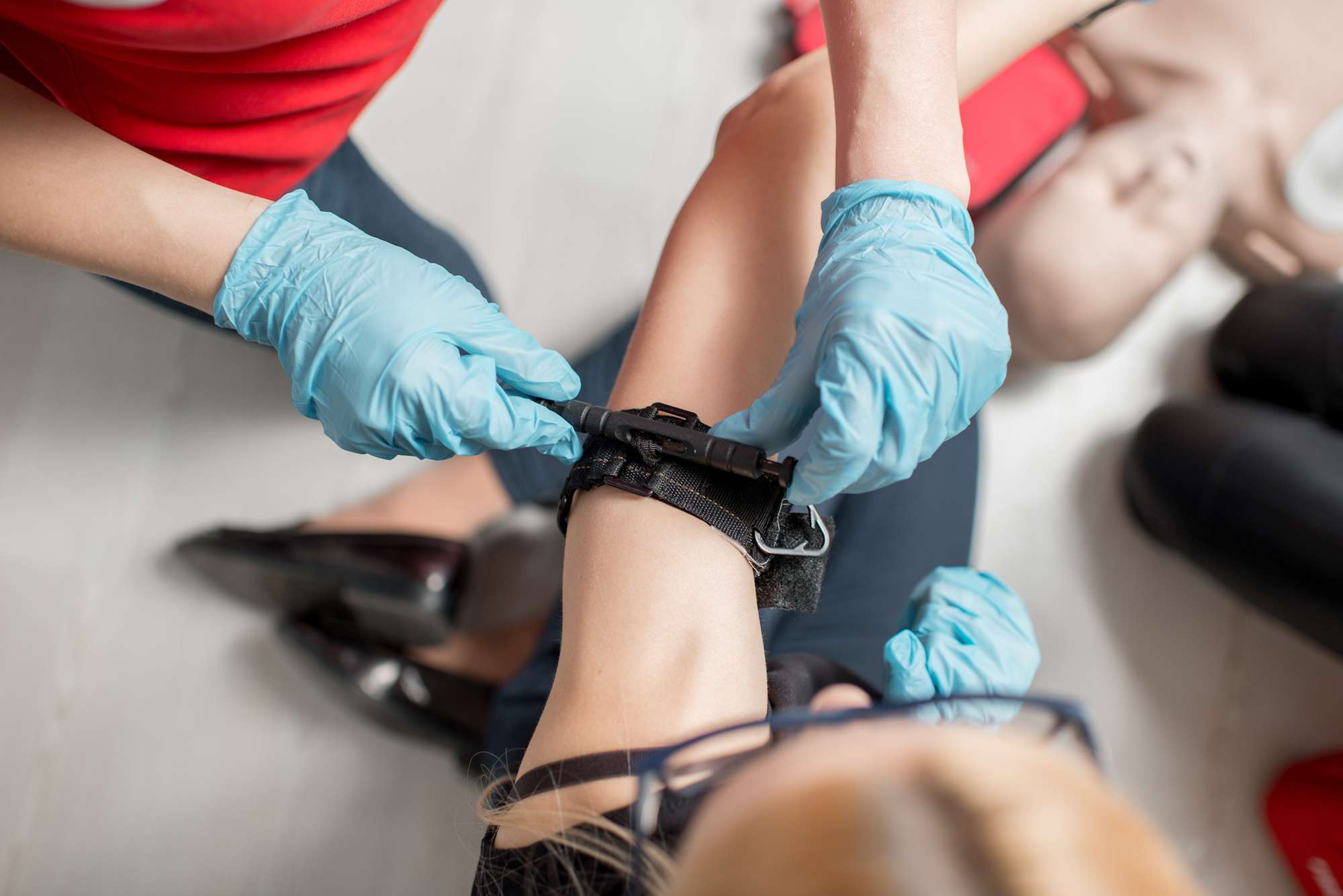If you are a health care worker, emergency responder, in the military, police, engage in combative sports, or you are a health care enthusiast, you should have a tourniquet. The beauty of a tourniquet is that it’s easy to use and highly effective (when properly used) at stopping blood loss and even death.
Since the tourniquet can be the device separating you from death, you need to be cautious of the one you go for. To help you out, here are some of the factors you should look out for to buy the right appliance:

The material used in making the tourniquet
The tourniquet can be made from different materials such as nylon, elastic, and others. Nylon tourniquets are the most popular as they are strong, lightweight, and rugged, so even if you are in the military or work in tough areas, they will provide you with maximum protection.
If you are a doctor, a lab technician, or working in a field where you deal with venous blood, get an elastic tourniquet. The tourniquet stops blood to the heart, increasing the pressure below so have an easy time drawing blood from the patient.
Tourniquet length
Tourniquets come in different lengths and to get the most from the device, you need to buy the right one. A 36” to 1-meter length tourniquet will work on most people, so if you aren’t sure of the person you will use the tourniquet on, this is an ideal length to go for.
Of course, if you are smaller than an average person, go for a smaller size tourniquet to make a smaller circumference.
If you are in the military, the standard tourniquet length to go for is 37.5”.
Type
Did you know there are many types of tourniquets in the market you can go for? So you need to be cautious when purchasing so you buy the right one that will give you the service you are looking for. Some of the popular tourniquet types are:
Elastic band tourniquets
They are made from a single elastic band material, and you stretch them around your limb and wrap them several times to stop bleeding. Although they take many forms, most of the common ones resemble an exercise band.
The beauty of tourniquets is they have a wide configuration, which allows them to provide compression at lower levels. Since they are wide, the predicted limb occlusion is usually at a lower level and a safe range.
Although they are great, they come with their fair share of negatives. One of the negatives is that since they are made from a single piece of elastic, a simple cut, tear, or accidental snag can damage the entire tourniquet.
Due to the nature of the tourniquet, you can only apply it to one hand, which can be limiting.
Windlass tourniquets
They are made from a webbing sleeve with Velcro, buckles, and rings to form and keep a loop. Inside the webbing, an internal webbing strip is threaded through the center of the windlass bar. When you twist the webbing from the inside, it also twists the internal webbing strip, reducing its length and producing enough compression to occlude blood flow in the limb.
Once you have tightened the bar enough, lock it in place with the tourniquet’s securing system.
Archeological records show that this tourniquet style has been around even before the Common Era times, and it’s still highly effective at stopping bleeding.
Besides being easy to use, it’s cheap to manufacture, so highly affordable.
The downside to this tourniquet type is that it only locks on one end, and since the webbing is twisted, it has a maximum force load and maximum length, which can be limiting in certain situations.
Pneumatic tourniquets
Pneumatic tourniquets are made from a sleeve with Velcro, and inside the sleeve, there is a manually inflatable compartment that you can inflate with your hand or machine.
The manually inflated tourniquets consist of a bulb that you squeeze with your hand to increase pressure inside the tubing until you reach your desired pressure.
On the other hand, the automatically inflated tourniquets are connected to a machine that inflates the tourniquet and provides the pressure you need.
The pros of this tourniquet are that it has a wide configuration which allows it to provide the necessary compression at lower levels. They are also easy to use.
Although they are often used in hospitals, you can find a few approved by Committee on Tactical Combat Casualty Care (CoTCCC) and use them in your home or area of work.
While the tourniquets are excellent in their work, they have several flaws. One flaw is you lender them useless when you puncture them. They can also be a challenge to use in certain areas of the limb, such as the junctional areas.
Are you interested in other types of tourniquets? Visit https://www.sammedical.com/products/sam-xt
Cuff width
The cuff width affects the pressure you need to block blood flow and your risk of injury.
A cuff with a wider bladder blocks blood flow with less pressure compared to one with a smaller bladder. The low pressure in the wider cuff significantly reduces the chances of injury.
The wider cuff also efficiently transmits blood to the deeper tissues hence easily reducing the bleeding.
As you are using the cuffs, to reduce the chances of injuries, ensure the cuff edges aren’t close to the joints of the affected limb.
Quality of the tourniquet
It goes without saying that you want a high-quality tourniquet that will efficiently provide blood flow occlusion and last for a long time.
Besides ensuring the material used in making the tourniquet is high quality, the other thing you need to consider when making the purchase is the company making the tourniquet.
For peace of mind the tourniquet will give you a great service, buy one from a company with an ISO 9001 certification. This way, you are sure the tourniquet meets the standards set by the CoTCCC.
Whether buying the tourniquet online or from a brick and mortar store, pay close attention to the packaging and ensure it’s from a reputable company. You don’t want to put your life in the hands of a knock off, do you?




